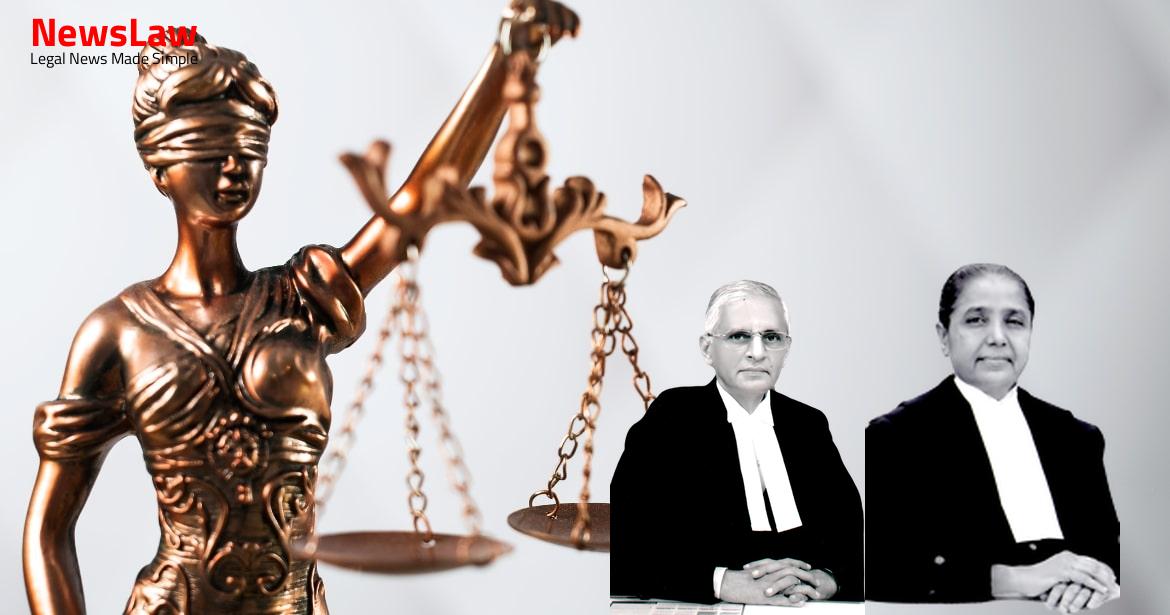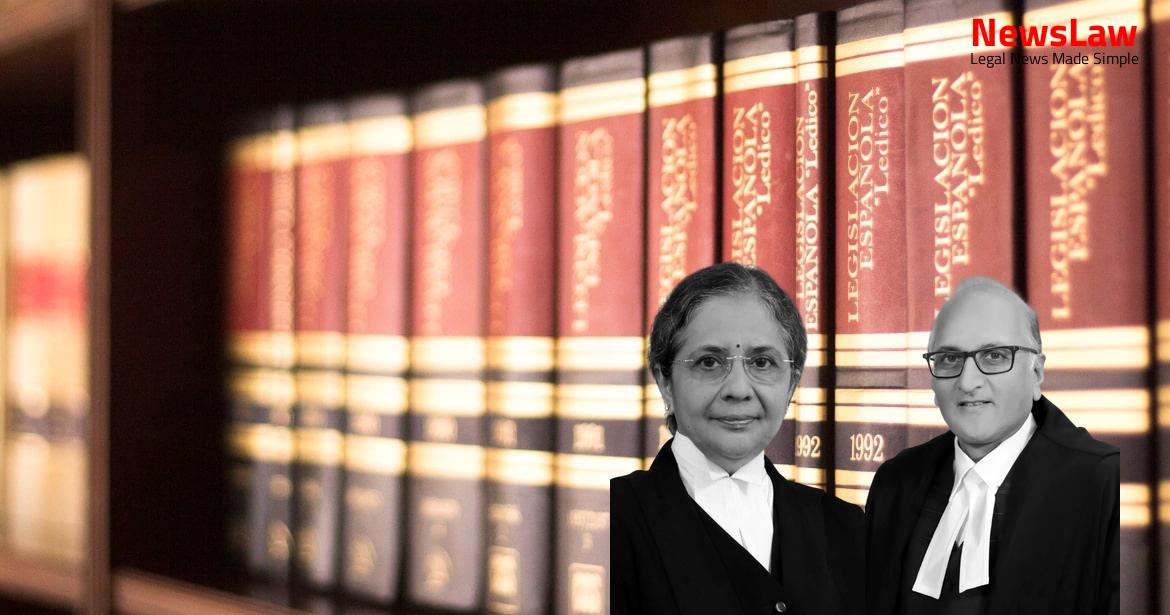The Supreme Court Of India has pronounced a significant judgment in the case related to the brutal murder of Chirag Rajput. The case involved accused Ishwari Lal Yadav and Kiran Bai, who were convicted and sentenced for their involvement in the heinous crime. This summary sheds light on the legal proceedings and outcome of the case, highlighting the pursuit of justice in The Chirag Rajput Murder Case.
Facts
- Appellants charged under various sections of the Indian Penal Code.
- Conviction and sentencing by the Sessions Judge, Durg in March 2014.
- Sentences imposed for different offenses including life imprisonment and fines.
- Confirmation of death penalty for main accused Ishwari Lal Yadav and Kiran Bai.
- Modification of punishment for other accused to life imprisonment by the High Court.
- High Court confirms death penalty for main accused and modifies sentences of other appellants to life imprisonment without remission or parole.
- On 27.03.2014, all the accused were convicted and sentenced to death for their involvement in the kidnapping and murder of Chirag Rajput.
- The main accused, Smt. Kiran Bai and her husband Ishwari Lal Yadav, practiced tantrism and believed in human sacrifice to gain siddhi.
- Chirag Rajput, a two-year-old boy, was kidnapped and murdered inside the house of the main accused for a sacrificial ritual.
- The accused confessed to the crime when questioned by the crowd who gathered to search for the missing child.
- Upon police intervention, incriminating articles were recovered from the house of the main accused.
- The body of Chirag was discovered buried in the premises of the accused’s house after a disclosure statement made by the accused.
- Vandana Rajput (PW-21), the sister of the victim’s mother, was present at home with Chirag on the day of the incident.
- The accused and one other individual named Krishna Tambi were named in the final police report filed under Section 173 Cr.P.C.
- The discovery of freshly dug earth and blood-stained items in the house of the main accused raised suspicions among the neighborhood, leading to the recovery of Chirag’s body.
Also Read: State of West Bengal vs. Respondents: Abetment of Suicide Case
Arguments
- The learned counsel for the appellants argues that there is no evidence to prove a common intention among the appellants for kidnapping and murdering the deceased child.
- The discovery of another person’s skeleton and the alleged bad character of the appellants as black magic practitioners are deemed inadmissible under specific sections of the Indian Evidence Act.
- The counsel contests the imposition of the death penalty on two appellants while the others were given life imprisonment without sufficient reason or justification.
- The counsel relies on a case law precedent to challenge the clarity of culpability among multiple accused and questions the applicability of ‘rarest of rare cases’ in this scenario.
- Concerns are raised regarding the reliance on alleged confessional statements without corroborative evidence leading to an error in convicting appellants under Sections 34 and 120B of the IPC.
- The argument contests the designation of this case as the ‘rarest of rare’ warranting capital punishment based on material contradictions in witness testimonies and acceptance of evidence like extra-judicial confessions.
- The prosecution is accused of failing to prove conspiracy among the appellants under Section 120B of the IPC, and errors are highlighted in applying Section 106 of the Indian Evidence Act due to the absence of the deceased’s body in exclusive possession of the main accused.
- The learned senior counsel emphasizes the lack of evidence besides alleged confessions to establish the guilt of the accused in the kidnapping and murder of the deceased boy.
- The reliance on confessional statements, deemed inadmissible under specific sections of the Indian Evidence Act, is highlighted as the basis for all findings of guilt by the trial court and the High Court.
- The State of Chhattisgarh argues that the case involves the gruesome murder of a two-year-old boy as a human sacrifice.
- The prosecution has successfully proven the guilt of the accused beyond reasonable doubt.
- The High Court considered aggravating and mitigating circumstances and affirmed the death sentence for the main accused individuals, Ishwari Lal Yadav and Kiran Bai.
- The case of Sushil Murmu, where a similar murder for a deity sacrifice was upheld, was cited to support the argument.
- The presence of all appellants in the main accused’s house, along with the recovery of the deceased’s body from the same location, is established through multiple witnesses.
- In contrast to another case where a confession was the principal evidence, here, there were multiple eyewitnesses providing testimony.
- The reliance on a judgment stating that extra-judicial confessions are weak evidence was acknowledged but deemed insufficient to invalidate the strong evidence in this case.
- Upon careful review of the judgments and evidence on record, the arguments presented by the State Counsel are supported.
Also Read: Judgment in Crl. Revision Petition No. 02/2011
Analysis
- The constable who took the application for post mortem was examined as PW-1.
- All witnesses consistently stated that the body was in two parts, with cheeks cut and tongue missing.
- Fresh mounds of earth were found, leading to the discovery of the deceased child’s body in two parts.
- The main accused, Ishwari Lal Yadav and Kiran Bai, were proven guilty under Section 302 read with Section 34 of the IPC.
- Confessions were made by the main accused, admitting to the murder of the child for human sacrifice.
- Witnesses entered the house of the main accused after hearing loud music, leading to suspicion.
- The body of the child had severe injuries including severed head, cut cheeks, and missing tongue.
- For the common intention to apply under Section 34, there must be a pre-arranged plan amongst the perpetrators.
- Other accused were followers of the main accused ‘tantriks,’ but their involvement in the crime was not proved.
- The burden of proof lies on the prosecution to establish facts within the knowledge of the accused.
- In ‘rarest of rare cases,’ death sentence can be imposed based on the gravity of the offense.
- The evidence must be corroborated and inspire confidence to prove the guilt of the accused.
- Balancing aggravating and mitigating circumstances is crucial in deciding the sentencing.
- In absence of concrete evidence of common intention or conspiracy, benefit of doubt was given to the other accused.
- Each case should be deliberated on its own merits to determine punishment.
- In the case of Shambu Nath Mehra, the court discussed the issue at hand
- The judgment provided specific legal analysis and reasoning
- The arguments made by Learned counsel in the current case were also drawn from the judgment in Shambu Nath Mehra
- The reliance on Shambu Nath Mehra’s case serves as a precedent in the current matter
- Life imprisonment is the rule and death sentence is an exception.
- Before opting for the death penalty, the circumstances of the “offender” and the “crime” need to be considered.
- Special facts and circumstances warrant passing of death sentence, striking a balance between aggravating and mitigating circumstances.
- Guidelines from earlier cases like Bachan Singh v. State of Punjab and Machhi Singh v. State of Punjab must be applied to each individual case.
- In cases of enormous crimes, death penalty should only be imposed in the gravest cases of extreme culpability.
- When the victim of the murder is an innocent child, helpless woman, old or infirm person, a person in a dominating position, or a beloved public figure.
- Murder committed for motives showing total depravity and meanness, such as hired assassination, cold-blooded gain-driven murders, or betrayals of the motherland.
- Murder of a member of Scheduled Caste or minority community arousing social wrath, especially in cases like ‘bride-burning’, ‘dowry deaths’, or remarrying for dowry or infatuation.
- The community’s sentiments can be stirred when murders are excessively brutal, grotesque, revolting, or dastardly, leading to intense community outrage.
- The appellants Ishwari Lal Yadav and Kiran Bai were previously convicted for a similar murder and sentenced to life imprisonment without remission or parole.
- The previous conviction for a similar offence is considered an aggravating factor.
- The murder in question was a planned one.
- The main accused’s guilt has been proven beyond a reasonable doubt.
- Precedents such as the case of Ronny do not apply in this scenario.
- Following the guidelines from the case of Sushil Murmu, this case falls under the category of ‘rarest of rare cases.’
- The death sentence imposed by the trial court and confirmed by the High Court is deemed appropriate.
Also Read: Partnership Dissolution Case: Legal Heirs’ Rights Upheld
Decision
- High Court order is set aside for the offence under Section 364/34 and 120B of IPC
- Conviction under Section 302/34 and 201 IPC is confirmed
- Death sentence imposed under Section 302/34 IPC is confirmed
- Release ordered if custody not required for any other case
Case Title: ISHWARI LAL YADAV Vs. STATE OF CHHATTISGARH
Case Number: Crl.A. No.-001416-001417 / 2017



